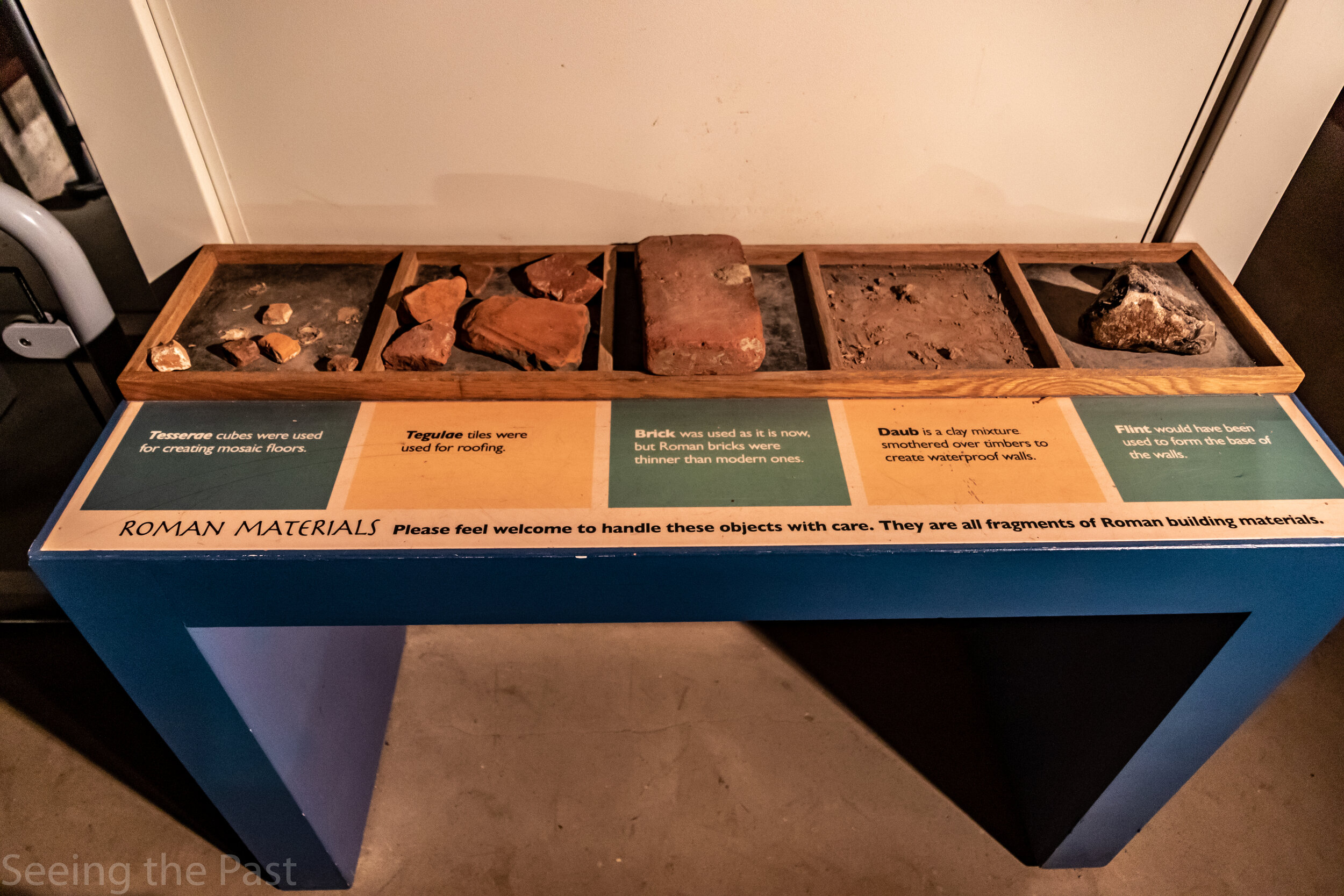Lullingstone Villa; a great insight into Roman life in Britain and remarkable secret christian church.
/Why visit Lullingstone Villa?
Lullingstone Villa is an excellent example of a Roman Villa / house situated in beautiful Kent Countryside. It was inhabited for than 300 years from the late 1st to the 5th century. Over time it was extended from a small villa to a substantial one with luxurious features. Added to this it has evidence of early christianity in Britain. Features making this a worthwhile visit include:
Viewing platforms that enclose three sides of the villa so that you can see it in its entirety
See loads of artefacts from all aspects of life as well as representing the villa itself.
Opportunities to handle artefacts and replicas.
See 2 fascinating well preserved mosaics featuring mythical heroes.
See part of the villa known as the “House-Church”, where the early christian religion was practised
Lullingstone is completely enclosed and so can be visited at any time of the year.
Watch an audio visual presentation explaining the development of the villa over 400 years.
Plenty of things for children to do. When we went on a Sunday afternoon, most visitors were in family groups.
A view across the entire villa standing above the bathhouse.
A stereotypical feature of a Roman villa is a bathhouse.
A model of the villa in the 4th c BC. A sign nearby notes that you can take it apart to see inside and get an in-depth look.
Lullingstone has two fascinating mosaics. Here you can see a bull, which is really the Greek God Zeus, (or Jupiter the Roman god), in disguise, abducting the princess Europa. Apparently, she was so beautiful that when Zeus first saw her, he fell totally in love with her and devised a plan to carry her off. He changed into a gentle bull and wandered over to her and knelt at her feet. She then spread flowers around his neck and climbed on his back. The trap was now sprung with Zeus carrying her off to Crete. Together, they had three sons, one of whom was King Minos of Crete. The constellation Taurus was named after the bull disguise.
This mosaic, again difficult to photograp, shows Bellerophon, a Greek hero, riding the winged horse, Pegasus, which was a gift from the goddess Athena. He is seen here bravely killing the fire spitting, Chimera, a monster that had been terrorising the people of Anatolia, which is part of Turkey today but used to be part of Greece.
There several cases and displays to show fascinating finds and provide information about the Roman way of life in Lullingstone Villa.
As the tiles were drying in the sunshine, animals have wandered along and left their paw prints in the soft clay to be preserved for 1500 years!
Opportunities are provided to handle some of the building materials and tesserae used to make mosaics.
A case full of finds associated with the building of the villa. The “box flue tile” labelled in the top left of the photo was designed to convey hot air from the underfloor heating system, the “hypercaust”, through the walls and so the villa would be very comfortable in the cold and damp British winters.
A writing tablet.The Roman equivalent of a pen, the stylus, is used to scratch words into the wax on this wooden tablet. After the information is no longer needed, the wax is melted and can be re-used. Roman re-cyling!
Roman bracelets.
Roman rings
The three photos above show the colourful information boards and associated display cases.
One of the major discoveries in the section known as the church house were a series of figures with their hands raised in prayer, the Roman way. The original wall paintings have been moved to the British Museum but display boards such as the one above, illustrate what was found.
Essential information.
Getting there;
By car ; Sat Nav, DA4 0JA go via the M25 and M20.On reaching Eynsford the road becomes a single carriageway with passing places.
By train; take the train to Eynsford Station. Turn left out of the station onto Station Road. Turn right at the T junction and follow for half a mile into Eynsford village. Turn left at Lullingstone Lane and cross the bridge over a ford. Follow Lullingstone Lane for approximately one mile until you reach Lullingstone Roman Villa.
Ticket prices;
Adult £8.10
Child (5-17 years)£4.90
Concession £7.30
Family (2 adults, up to 3 children)£21.10
Overseas Visitor Pass (9 or 16 days unlimited)





























Buckler’s Hard has three historical phases; a proposed sugar town that failed, a shipbuilding yard initially providing ships for the Royal navy and a base for various things linked to World War Two but especially D Day. Walking from the car park you suddenly come across this beautiful, unmodernised, Georgian street. One side of the road contains an amazing museum of all the activities that have taken place over the last 300 years. It includes some intricate models of sailing ship building here, loads of artefacts and full size waxwork models illustrating life in the late 18th and early 19th centuries.